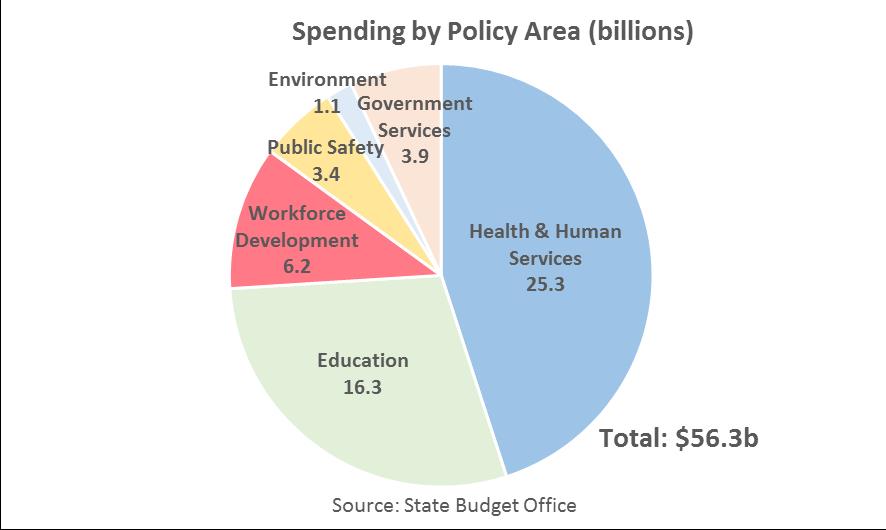Each year around early February, after months of exhaustive work and late nights at the office, the State Budget Office releases the Governor’s Executive Budget Recommendation, formally kicking off Michigan’s annual budget process. And though it may seem that excitement surrounding the release of an appropriations document might be reserved to the number-crunching cubicle-dwelling bureaucrats in Lansing, the far-reaching impact of the state’s budget ensures it’s importance to all of Michigan’s 10 million-plus residents.
In the months leading up to the release date, the Governor works closely with the appointed State Budget Director to decide what the administration’s priorities will be, what new programs or funding increases they would like to see, and what “efficiencies” (i.e., cuts) will be made to ultimately bring the budget into balance.
In the end, however, the Governor’s Executive Budget Recommendation is just that—a recommendation. Any new programs or initiatives that make it into the Executive Recommendation have no guarantee of making it into law, because once the recommendations are released to the legislature they are free to tweak, add, or cut as they see fit (though straying too far from the administration’s priorities could risk a veto). Then come June, after months of negotiations, after all the stakeholders have had their say, and after identical versions of the budget are passed in both the House and the Senate, the budget makes its way back to the Governor’s Office to be signed into law.

On February 8th, the Governor’s Office released the fiscal year 2018 budget recommendation, appropriated at $56.3 billion in total. It was received with less controversy than in previous years, owing to its prudent yet less-exciting continuation of some major initiatives started earlier in the Governor’s tenure. This includes items like a $20 million deposit into the Michigan Infrastructure Fund, lowering the assumed rate of return on the state retirement system to reduce future liabilities, and increasing the Rainy Day Fund to bring the account to $1 billion. The Executive Recommendation also includes $4.1 billion for the continuation of the Healthy Michigan Plan, Michigan’s version of Medicaid Expansion that currently serves over 600,000 residents, despite uncertainty surrounding the future of the Affordable Care Act at the federal level.
Other areas the administration recommends investing in are centered on education, human services, public safety and continuing efforts towards alleviating the Flint water crisis. The Governor proposed an increase of $105 per pupil for public schools and a 2.5% increase for higher education. The State Police budget saw an increase of $9.2 million to hire 100 new State Police recruits, which would bring the State Police force to its highest level in 15 years. Homeless shelters would see an increase of $3.7 million under the Governor’s recommendation, and children in low-income families would see a boost in the annual clothing allowance for back-to-school clothing and supplies. Additional proposals included moderate increases for low-income residents and at-risk children, along with anticipated infrastructure increases outlined in the 2015 transportation package.
Continued efforts for the Flint Water Crisis are also reflected throughout the Governor’s budget recommendation and spread across state agencies. The statewide school drinking water quality program would see an additional $4.5 million and $2.6 million would go to expanding a lead and copper rule support program under the Governor’s proposal. For Flint, there’s $25 million appropriated to directly support the ongoing Drinking Water Declaration of Emergency as well as an additional $23.8 million scattered across state agencies.
Over the next few months, the legislature will debate the merit and cost-effectiveness of the Governor’s budget proposal, hammer out the details, and adapt them to fit their own priorities while working to appease their constituents, special interest groups, and the Executive Office. These decisions will ultimately be decided over a series of budget committee hearings, a great deal of public testimony, and many late-night workgroup meetings between now and June.
This process is where policy is made, where proposals are attached to the financial backing needed to implement them, and where the tensions between the Executive, House, and Senate fine-tune the state’s public policies and fiscal future. While the technical nature of the budget process can seem more procedural than policy-oriented, to see the priorities and values of any society, look no further than its budget.



